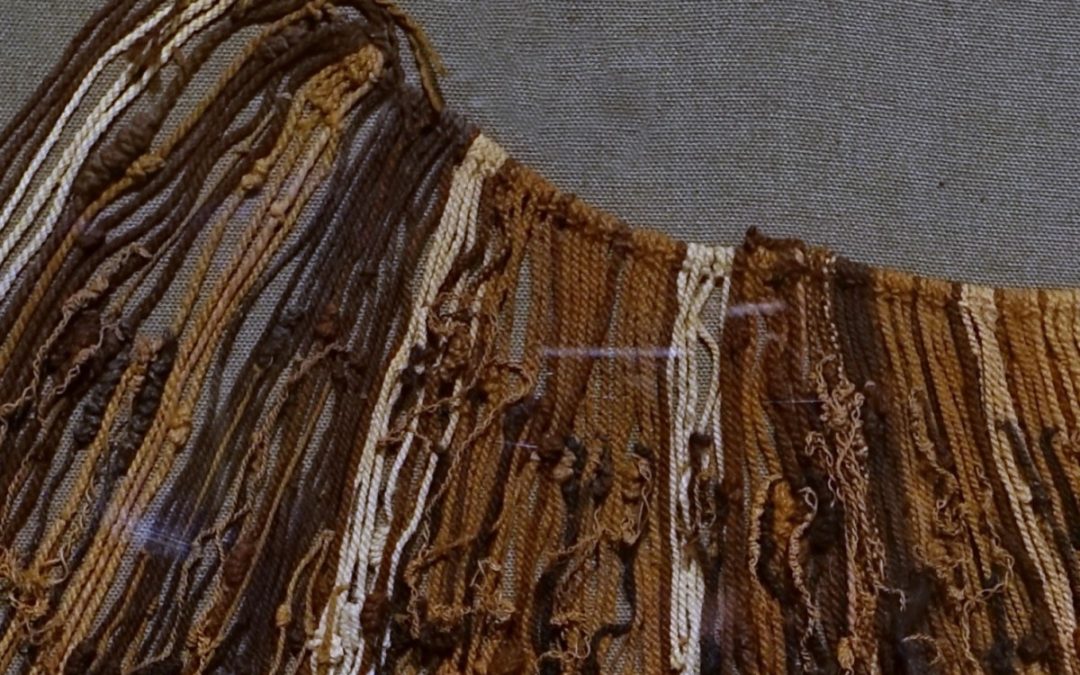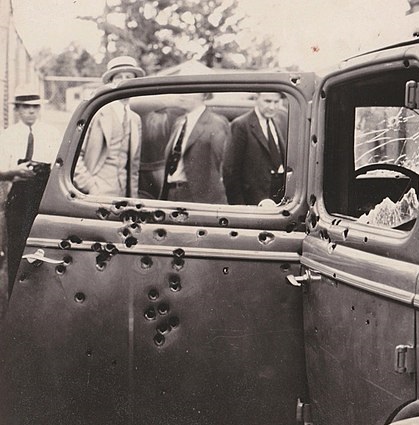
by Richard Subber | Mar 19, 2023 | American history, Book reviews, Books, History, Human Nature
Really, they weren’t savages…
Book review:
In the Shadow of the Great Blue Hill
by Karen H. Dacey
Lanham, NY: University Press of America, Inc., 1995
176 pages, with bibliography and index
“…a cultural tragedy” in the Massachusetts Bay area.
Namely, the transforming conflict between the Puritan colonists and the Algonquian-speaking Indians of eastern Massachusetts—specifically, the Massachusett and the Nipmuc clans—who shared Algonquian languages and resistance to the European invasion, but little else.
Dacey gives duly detailed attention to: the relentless physical expansion of the Puritan colonial settlements; the efforts, championed by Rev. John Eliot, to “civilize” and “Christianize” the Indians, including the optimistic creation of 14 Praying Indian towns; King Philip’s (Metacomet’s) War, 1675-1676, a spirited but manifestly quixotic attempt by the fatally disorganized Indians to gain control of their ancestral lands from the colonists, and the barely disguised greed, treachery, and self-serving disdain of the Europeans as they steadily grabbed control of the eastern Massachusetts landscape from the indigenous peoples.
In the Shadow of the Great Blue Hill offers a nuanced elaboration of the story we think we know so well. She offers respectful accounts of the lifestyles and ambitions of the colonists and Indians.
The conflict was, in fact, intensely personal.
Dacey declares: “I believe that what happened in Massachusetts Bay was a cultural tragedy.”
Indeed, she supports this provocative distillation of the colonists’ motivation: “…[the Puritans] were determined to change the Indians into Europeans. Although greed for land clearly fueled the struggle in colonial New England and eventually erupted into all-out war, the Bay settlers really preferred to do cultural battle. They could not believe that if given the opportunity, the Indians would not choose to become like them.”
You may be surprised to learn that the Indians weren’t savages.
In the Shadow of the Great Blue Hill probes the expectations and disappointments of the Praying Indians, the powerful Indian clans that resisted the colonists, and the colonists themselves.
* * * * * *
Book review. Copyright © Richard Carl Subber 2023 All rights reserved.
Book review:
John Eliot:
The Man Who Loved The Indians
Entertaining, convenient biography
by Carleton Beals
–
In other words: Poems for your eyes and ears with 64 free verse and haiku poems,
and the rest of my poetry books are for sale on Amazon (paperback and Kindle)
and free in Kindle Unlimited, search Amazon for “Richard Carl Subber”
* * * * * *

by Richard Subber | Mar 15, 2023 | American history, Book reviews, Books, History, Power and inequality
guns and germs…
Book review:
1491:
New Revelations of the Americas Before Columbus
by Charles Mann
New York: Vintage Books, 2011
1491 offers everything you never knew about civilized people in the Americas before the Europeans arrived and killed most of them (OK, many died in battle, but it was European diseases, mostly). Maybe close to 100 million “native” people died within 100 years or so of the “discovery” by Columbus…but hold on, this book is not about Wounded Knee-type criticism or ex post facto self-flagellation.
In 1491, Mann beautifully describes the marvelous sophistication of cultures, cities, agriculture, arts, and science that blossomed in North America, Central America, and South America thousands of years ago, in many cases predating achievements and growth and civilization in Europe.
Yes, the Incas never used the wheel except for children’s toys.
Yes, the Mississippian city of Cahokia was a bustling port and a trading center with population equal to Paris in France—and that was 500 years before Columbus sailed.
Yes, the Olmec culture in what is now Mexico invented the zero whole centuries before mathematicians in India did the same.
My recollection of schoolboy learning about the history of the Americas is that the dates and events were tied to discovery and conquest and colonization by Europeans. The implication was that, before the white men with guns, germs and steel arrived, nothing much was going on in whole continents characterized more by “virgin land” and “endless wilderness” than by people who had agriculture, city life, art, trade, commerce, religion, science, kings, and philosophers.
Mann offers 1491: New Revelations of the Americas Before Columbus. For me, the joy of reading this book is learning about the multiplicity of cultures that flourished in the Americas, and learning how they tamed and managed and very greenly conserved their environment…and for me, the sad revelation of this book is understanding that the peoples of the Americas were human beings whose achievements were noble and notable, and yet, lamentably, their cultural legacies are largely lost and the losses are barely mourned.
In 1533 Pizarro and his conquistadors at Cuzco precipitated the decline of the 300-year-old Inca empire in Peru. Fifty years later, the Spanish colonial administrators in Peru ordered the burning of all the Incan “khipu” knotted string records because they were “idolatrous objects.” Khipu were the Incas’ only form of writing. The smoke from the burning of their books gets in your eyes, forever and ever.
* * * * * *
Book review. Copyright © Richard Carl Subber 2023 All rights reserved.
Book review: The Sea Runners
…it informs, it does not soar…
by Ivan Doig
–
Writing Rainbows: Poems for Grown-Ups with 59 free verse and haiku poems,
and the rest of my poetry books are for sale on Amazon (paperback and Kindle)
and free in Kindle Unlimited, search Amazon for “Richard Carl Subber”
* * * * * *
by Richard Subber | Mar 11, 2023 | My poetry, Poetry, Reflections
such wonted white…
Purely
The fallen snow lifts my eyes
as high as everything,
it cloaks all, this gentle tableau,
so white, so grey,
so mottled white in the mix
of so many of the plainest colors,
so many hints of vagrant hues,
so quiet,
such stillness,
such cold,
such wonted white,
all, all…
December 11, 2019
I marveled at the snow creature, the one that takes the shape of all it touches…
* * * * * *
My poetry. Copyright © Richard Carl Subber 2023 All rights reserved.
Book review: The Bartender’s Tale
Ivan Doig’s story, I mostly loved it…
–
Above all: Poems of dawn and more with 73 free verse poems,
and the rest of my poetry books are for sale on Amazon (paperback and Kindle)
and free in Kindle Unlimited, search Amazon for “Richard Carl Subber”
Your comments are welcome—tell me what you’re thinking.
* * * * * *

by Richard Subber | Mar 10, 2023 | Book reviews, Books, History, Politics, Power and inequality, World history
an informed passivity…
Book review:
The Last European War:
September 1939-December 1941
by John Lukacs
New Haven, CT: Yale University Press, 1976.
This is a typical scholarly Lukacs work, with high clarity insights and no inhibitions about expressing his informed critique of the work of other historians.
Lukacs illuminates the events, the leadership and the popular sentiments of national populations during the period leading up to the start of World War II and the initial conflict prior to the entry of the United States into the war in December 1941. I point to the word “national” to note the emphasis explained by Lukacs in The Last European War, based on his interpretation that national sentiments were of paramount importance in shaping both the popular reaction to war and the popular attitudes toward the conflict.
A strong impression: The people and leaders who were living through this turmoil had only marginal appreciation of the effectiveness and impact of their actions. Nevertheless, the Nazis’ rise to power was significantly facilitated by the passivity (an informed passivity, not a state of ignorance) of too many individuals who didn’t advocate a morally-framed opposition.
* * * * * *
Book review. Copyright © Richard Carl Subber 2023 All rights reserved.
Book review: Saint Joan
by George Bernard Shaw
–
Writing Rainbows: Poems for Grown-Ups with 59 free verse and haiku poems,
and the rest of my poetry books are for sale on Amazon (paperback and Kindle)
and free in Kindle Unlimited, search Amazon for “Richard Carl Subber”
* * * * * *

by Richard Subber | Mar 5, 2023 | American history, Book reviews, Books, History
they weren’t heroic…
Book review:
Go Down Together:
The True, Untold Story of Bonnie and Clyde
by Jeff Guinn (b1951)
New York: Simon and Schuster, 2009
467 pages
Newspaper coverage in the early 1930s turned Bonnie Parker and Clyde Barrow into nationwide celebrities. Movies and books have perpetuated the carelessly positive news coverage, and the often fictional heroic antics of the crime duo.
The matter-of-fact treatment in Go Down Together makes the unvarnished reality more clear: Bonnie and Clyde were wacky, violent, and vicious criminals who killed 13 people and spent their 21-month crime spree on the run, mostly living “…the mundane, routine Barrow Gang misery of camping in cars and dining on cans of cold beans.”
They were killed in an ambush on May 23, 1934, in Louisiana. Several officers of the law fired about 160 bullets at them in less than 20 seconds—neither Bonnie nor Clyde fired a single shot.
Nothing about them makes a pretty picture.
* * * * * *
Book review. Copyright © Richard Carl Subber 2023 All rights reserved.
We Were Soldiers Once…and Young
…too much death (book review)
Lt. Gen. Harold G. Moore (ret.)
and Joseph L. Galloway
–
Writing Rainbows: Poems for Grown-Ups with 59 free verse and haiku poems,
and the rest of my poetry books are for sale on Amazon (paperback and Kindle)
and free in Kindle Unlimited, search Amazon for “Richard Carl Subber”
* * * * * *



